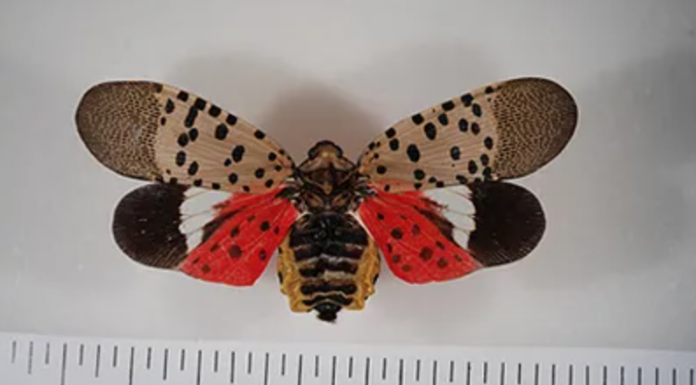The Hutchinson (Kan.) News — While the invasive spotted lanternfly has been wreaking havoc on the East Coast, officials in Kansas were shocked to find one pinned on a student display at the state fair.
The spotted lanternfly is an invasive insect that prevents plants from photosynthesizing, causing them to die, prompting health officials to suggest killing it on site. Kansas State Fair officials judging 4-H entomology entries last week discovered one display included an invasive moth.
That triggered a federal investigation.
“We had one entomology issue,” Fair Board member Gregg Hadley, Director for Extension at K-State Research and Extension, advised the rest of the board Friday morning. “It was a dead one, but it was in a critter box.”
A pinned spotted lanternfly adult with wings open. The bright red coloration visible on the hindwings cannot be seen when the insect is at rest.
The insects cause massive damage to plants and are known to feed on over 70 different types of trees and plants.
The student from Thomas County who included the insect in a 4-H insect display box had properly identified it as a spotted lanternfly.
The student, however, Hadley said, was unaware the bug was an invasive species that has prompted quarantines in at least 45 counties in Pennsylvania and New Jersey to try to stop its spread.
“They think it came in on a camper,” Hadley said.
The insect, which looks like a moth but is actually a hopping tree bug, prevents plants from photosynthesizing by depositing sticky honeydew excretions that then grow mold, causing the plants to die.
Profile of spotted lanternfly adult at rest. If allowed to spread in the U.S., this pest could seriously impact the country’s grape, orchard, and logging industries, according to the USDA.
It feeds on some 70 different plant species and has spread widely since showing up in Pennsylvania about 10 years ago. It’s believed it arrived on cargo from China … READ MORE.



